Wonderful quotes:
In the past 40 years, Guangdong has become the largest province in domestic tourism consumption. In 2016, the province’s total tourism revenue was 1.156 billion yuan, accounting for about 1/4 of the country’s total tourism revenue. This is the victory of urban tourism… Among them However, the role of rural tourism has always been a supporting package for big tourism, and it has not really played a role.
Big capital is hard to come by, and maybe these places don’t need too much capital. After too much capital enters, the local ecology and land will not have such a large carrying capacity.
Rural tourism is a normalized way of life and a leisure product, it is not a one-off.
Guangdong tourism has always been at the forefront of reform and opening up and tourism development, and the development of rural tourism in Guangdong Province is at the national upstream level. According to the data of rural tourism development in various cities in 2016, the total revenue of rural tourism in Guangdong in 2016 was 62 billion, accounting for 11% of the total revenue of rural tourism in the country; 560,000, accounting for 7% of the number of rural tourism practitioners in the country.
On the other hand, from the perspective of promoting employment and increasing income, the contribution rate of rural tourism in Guangdong Province to the province’s total tourism revenue in 2016 was only 5.4%, and the average rural tourism consumption was only 24% of the province’s average consumption. On the occasion of 40 years of reform and opening up, the supporting role of rural tourism in Guangdong is changing.
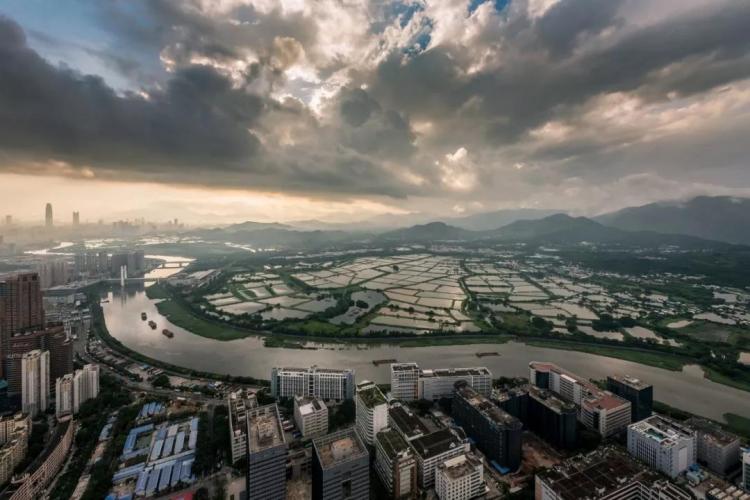
2018 is the 16th year since Guangdong Province launched the “Tourism Poverty Alleviation” project. Guangdong Province’s “Tourism Poverty Alleviation” has experienced the exploration from the “old three changes” to the “new three changes”, and finally to the “four changes” of rural revitalization. A group of demonstration villages for poverty alleviation through tourism have created a number of industrial belts for poverty alleviation and development through tourism. In July 2018, Guangdong Province issued the “Guangdong Province Promoting the Implementation and Development of Global Tourism” and the “Guangdong Provincial Global Tourism Development Report 2018”, which further clarified the close relationship between rural tourism, tourism poverty alleviation and global tourism.
What kind of development context has Guangdong tourism experienced in the past 40 years of reform and opening up, the experience summary of tourism poverty alleviation in Guangdong, and what are the joint points of global tourism and tourism poverty alleviation in Guangdong? Professor Wu Zhicai, Director of Guangdong Tourism Strategy and Policy Research Center of South China University of Technology and Director of Guangdong Rural Revitalization and Tourism Big Data Engineering Technology Research Center , is mainly engaged in basic and applied research on regional development strategy and tourism planning, rural tourism and poverty alleviation. More comprehensive understanding and profound insights.
Guangdong Tourism in the Forty Years of Reform and Opening-up
Xinlvjie: Combing the development of Guangdong’s tourism reform and opening up over the past 40 years, what are the development stages of Guangdong’s tourism? How has the role of rural tourism in the development of tourism in Guangdong Province undergone changes and what are its characteristics?
Wu Zhicai : 2018 is the 40th year of reform and opening up. Guangdong tourism has just experienced the transition from diplomatic career to economic industry, and has gone through three stages.
The first stage is from 1978 to 1988. This decade is in the stage of political, business and tourism . This stage is in the early stage of reform and opening up. Because Guangdong is adjacent to Hong Kong and Macau, many Hong Kong and Macau businessmen have invested in bridgehead cities, resulting in the earliest batch of Sino-foreign joint venture hotels in China. Policy support coupled with our Hong Kong businessmen’s investment in tourism, this is the start of Guangdong’s tourism industry.
The second stage is from 1989 to 2007, this stage is called scenic spot tourism stage . In 1989, China’s first real theme park, Splendid China, officially opened. After nearly 20 years of scenic development, Guangdong Province has become a very representative and important investment area for Chinese tourism.
The third stage is from 2008 to the present, called the global tourism stage . The concept of all-for-one tourism in Guangdong Province began to develop as early as 2008. At that time, Guangdong Province took the lead in launching a national tourism and leisure plan, becoming the first comprehensive tourism reform demonstration area in the country. Since then, Guangdong’s big tourism, big structure, big industry, and even some big markets have been gradually promoted.
In the past 40 years, Guangdong has become the largest province in domestic tourism consumption. In 2016, the province’s total tourism revenue was 1.156 billion yuan, accounting for about 1/4 of the country’s total tourism revenue. This is a victory for urban tourism. The success of urban tourism in Guangdong is supported by four aspects. The first is the advantages of Guangdong’s open policy, the second is the vitality of the industrial economy brought about by the open policy, the third is the further promotion of market-driven investment, and the fourth is the government’s support in public facilities.
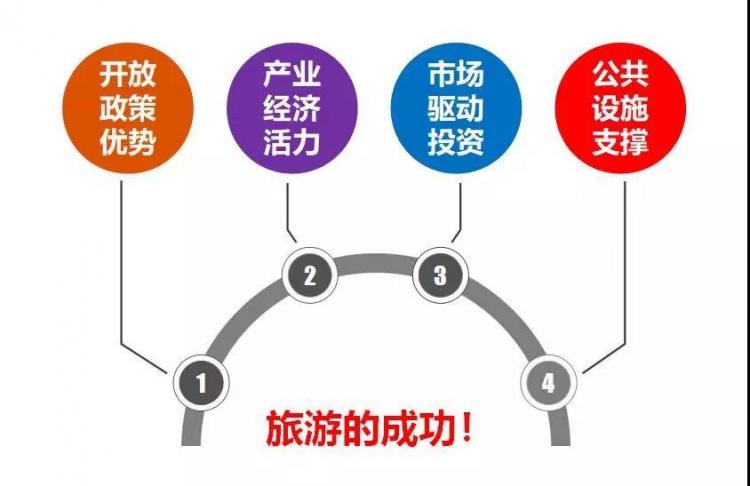
Among them, the role of rural tourism has always been a supporting package of big tourism, and has not really played a role. But I think that in the next 40 years, rural tourism is crucial to Guangdong’s ability to secure the number one spot. The implementation plan of Guangdong’s all-for-one tourism clearly proposes to focus on rural tourism and promote the development model of all-for-one tourism, which has been affirmed by the Guangdong Provincial Party Committee and the Provincial Government, indicating that rural tourism has great potential. The future development of tourism in Guangdong will be driven by two wheels, from urban tourism to rural tourism.
Xinlvjie: What are the characteristics of human geography in the key areas of tourism poverty alleviation in Guangdong Province?
Wu Zhicai : First of all, the Pearl River Delta of Guangdong Province and the east, west and north of Guangdong present a dual structure, with extremely unbalanced regional development and urban-rural development. The per capita income of many places in the east, west and north of Guangdong is lower than the national average, and they are absolutely poor. In addition, in urban areas, there is actually a phenomenon of relative poverty.
The characteristics of human geography, I sum up, are old, young, border, and far. “Old” refers to many old red revolutionary areas in the east, west and north of Guangdong, mainly mountainous areas. “Shao” refers to ethnic minorities, that is, the “Three Links and One Yang” (Lianzhou, Liannan, Lianshan, and Yangshan) areas in Qingyuan. These places are all areas inhabited by ethnic minorities, and they are also relatively poor areas. Bian is the frontier border, such as the borders near Hunan, Jiangxi, and Guangxi. The last one is far away, away from the city, away from the traffic. Old, young, frontier, and far away, these four characteristics are quite prominent.
New Travel World: Since the launch of the “Tourism Poverty Alleviation” project in 2002, Guangdong has promoted poverty alleviation through tourism for 16 years. What changes have you experienced in terms of regions, priorities, guiding ideology and methods?
Wu Zhicai : I think the overall idea of tourism poverty alleviation in Guangdong is to achieve three steps: the first step is blood transfusion, the second step is hematopoiesis, and the third step is blood circulation . Blood transfusion is to provide funds, blood production is to build industries, and finally blood circulation is to integrate people’s livelihood and industries. The poverty alleviation model in Guangdong Province can be summed up in four sentences: government guidance, market players, multi-party linkage, and simultaneous measures.
The specific approach is through several aspects. The first is to help tourism infrastructure construction . The provincial finance will arrange funds to provide key support for high-quality projects every year, and invest in the construction of tourism infrastructure such as roads, signs, toilets, and parking lots.
The second is that in recent years, the provincial finance has invested 1.2 billion yuan in coastal and eco-tourism , focusing on supporting the construction of two coastal tourism and two eco-tourism industrial parks, hoping to generate agglomeration effects.
The third is the assistance of talents . Every year, the Provincial Tourism Bureau and the Organization Department carry out training for tourism talents to support the construction of a talent team.
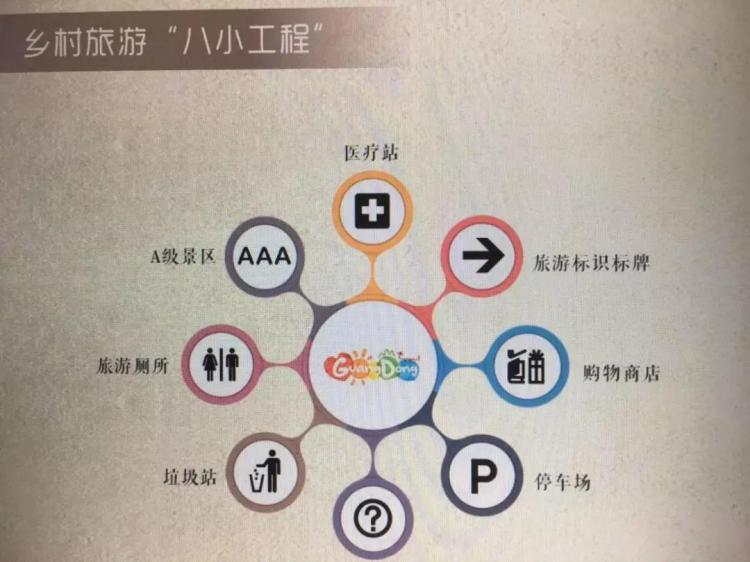
The fourth is very important, which is to build poor villages into characteristic villages . Guangdong has selected 117 impoverished villages, and through the “eight small” projects, rural tourism will drive rural poverty alleviation and further promote rural revitalization.
New Travel Industry: In July 2018, the “Guangdong Province Promoting Global Tourism Implementation Development Plan” and the “Guangdong Province Global Tourism Development Report 2018” were released and released at the same time. What are the joint points of global tourism and tourism poverty alleviation in Guangdong Province?
Wu Zhicai : Our team is honored to be the host of this plan and report. As the leader of the research group, I participated in the whole process. The plan and report were released on July 28, 2018.
Tourism is an important tool for poverty alleviation, rural tourism is the focus of global tourism, and global tourism is an important strategy for rural revitalization. We need to clarify the relationship between the three. In the future, poverty alleviation through tourism and global tourism should be considered as an integration. Through tourism, we will promote poverty alleviation, further promote the development of global tourism, and finally drive rural revitalization.
Reproducibility of Guangdong Tourism Poverty Alleviation Model
New Travel World: What experiences and inspirations does the Guangdong Provincial “Tourism Poverty Alleviation” project bring to the overall development of Guangdong’s tourism in the future? For other provinces and cities, what practices of “tourism poverty alleviation” in Guangdong Province are replicable?
Wu Zhicai : There are two important functions of tourism. The first is Huimin, and the second is Zhenxiang . Enriching the people, benefiting the people, and revitalizing the countryside. Guangdong’s global tourism focuses on rural tourism. Therefore, the first important experience is to use rural tourism as an important sector and growth point to promote the development of Guangdong’s global tourism and form a large village. pattern.
The second is the integration of large rural industries , which further promotes the integration of rural tourism and industries, and drives the revitalization of the entire rural industry.
Third, integrate tourism into the integration of “living, working, traveling, and creating” to promote the overall upgrading of rural areas in the whole region and realize rural revitalization.
Guangdong’s approach, I think there are four aspects that can be used for reference.
The first point. Guangdong launched 117 poverty alleviation villages, focusing on the upgrading of tourism infrastructure and supporting services represented by the construction of the “Eight Small Projects”, and cultivated a number of tourism poverty alleviation demonstration sites.
Second, line. Relying on the demonstration and improvement of rural contiguous areas proposed by Guangdong, and through the promotion of global tourism, a number of industrial belts for tourism poverty alleviation and development have been created.
Third, noodles. The Provincial Party Committee and the Provincial Government have proposed global rural environmental governance, through the “four changes” project to promote the upgrading of rural industries – production areas into scenic spots, farms into parks, farming experience into experiences, and farm houses into guest rooms, to further drive the development of rural areas in Guangdong. Revitalize development.
From the three aspects of point, line and surface, as the three major projects of rural revitalization in Guangdong, there is also a very important fourth aspect – to cultivate a group of tourism poverty alleviation leaders, which is “three plus one”.
Xinlvjie: The Guangdong Provincial Department of Culture and Tourism has carried out tourism planning and poverty alleviation public welfare activities. What do you think of the role of planning in tourism poverty alleviation projects? What specific work did you do in the poverty alleviation planning project for rural tourism in Lingshui Village, Pingyuan County?
Wu Zhicai : The role of planning in poverty alleviation, I think there are two activations.

Lingshui Village
The first is to activate the mind . It has activated the thinking of party and government cadres, including villagers, and let them discover the resource value and development possibility of this place. They think this place is very ordinary, but from the perspective of planning, the value of this place is extraordinary, and the development concept and philosophy of the local people are activated.
The second is to activate the market . We will further transform the idea of planning to meet market demand, and let more capital go to the countryside to pay attention to the possibility of investment in this place. In this case, it is what we call activating capital. This activation found the value of this place. Finally, through the activation of capital. I think planning plays such a very important role in connection and leading.
In this project, in addition to text planning, we also did three things. The first thing is to communicate with the county leaders and town leaders where the village is located, including relevant departments, such as agriculture and tourism departments, as well as the village secretary and village head, so that they can clearly understand the value and value of the village. development model. Through top-level communication, let the local people pay more attention to and support the poverty alleviation work and tourism development of this village.
The second thing is that we have communicated with some small investors, and now these investors will spontaneously and independently invest in some forms of rural tourism.
The third thing is that after the villagers see this plan, they will also make some small rural tourism facilities for the market, such as homestays, farmhouses, souvenir shops, etc.
From the three aspects of the government, the market and the people, we have communicated, and poverty alleviation tourism will gradually form an atmosphere. Big capital is hard to come by, and maybe these places don’t need too much capital. After too much capital enters, the local ecology and land will not have such a large carrying capacity.
New Travel World: Can you share some cases or views that can inspire poverty alleviation through tourism?
Wu Zhicai : Everything has two sides. Tourism can not only alleviate poverty, but it may also lead to new poverty. This kind of view and cases exist in many places.
I have always divided rural revitalization into three stages. The 1.0 stage is government-led , solving problems such as environmental governance and upgrading of hardware service facilities.
The 2.0 stage is the entry of capital. Driven by capital, if capital monopolizes resources too strongly, it may cause new problems.
The 3.0 stage is the integration of government + capital + villagers . This is what we want to see most, which is the so-called “co-construction”.
In order to properly handle the co-construction, sharing and co-prosperity in tourism, the construction of interest integration is very important.
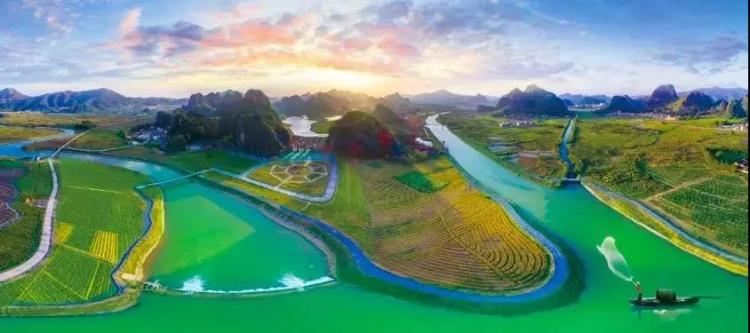
Qingyuan Kowloon Town
There is a Jiulong Town in Qingyuan, which is a good case. It has realized the transformation of rural resources into assets, farmers’ funds into shares, and farmers into shareholders. It has truly realized the trinity of market + villagers + government, promoted rural revitalization, and cracked down on poverty alleviation.
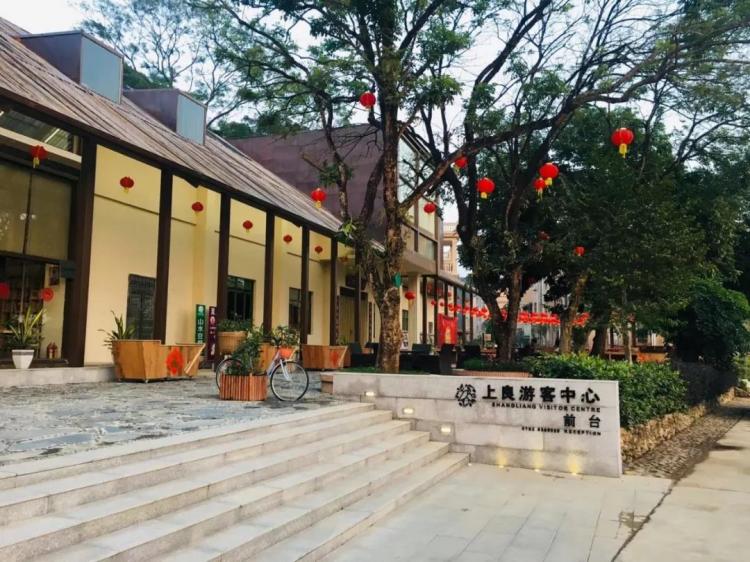
Shangliang Homestay Village, Boluo County, Huizhou
There is also Shangliang Village in Boluo County, which is a tourist attraction in the whole province. There are 28 houses in Shangliang Village, and 14 of them are rented out to the company as homestays, so that the villagers can get rental income. At the same time, homestays drive overall tourism, and villagers can also do some business of their own, participating in the co-construction and sharing of tourism development.
New Travel World: From your interviews and research experience, can you summarize some commonalities or common problems in the success of tourism poverty alleviation projects?
Wu Zhicai : The commonality of the successful cases of poverty alleviation through tourism is the integration of urban and rural areas, symbiotic co-prosperity, and common development, and the reshaping of rural values drives rural revitalization and rural modernization.
There are several aspects. The first is people , whether the village sages can come back, whether the elites in the industry can pay attention to the villages, and whether the leaders in the villages can play a role.
The second is production, that is, industry . First of all, the government should give more support to farmers and rural areas, secondly, more social capital should be able to enter the countryside, and finally, it should be able to drive the capital of ordinary people to participate in the development of the entire industry. Capital is integrated through various cooperations in land and homesteads, and even investment and entrepreneurship from private savings.
The third is literature, cultural attraction . We have a lot of intangible cultural heritage. The inheritance and protection of culture is very important, and we must build cultural confidence.
It should be said that the vast majority of rural tourism is positioned around the local and surrounding urban markets, and inter-provincial markets are rare. Although there are some, such as the “Five Golden Flowers” in Chengdu, the proportion of inter-provincial tourists is not necessarily high. Many local tourists. The core market of rural tourism is the local area, and the secondary market is the surrounding urban agglomerations. Its positioning must be like this, and there will be no more distant markets, because rural tourism is a normalized way of life, a kind of leisure product, it is not disposable.




